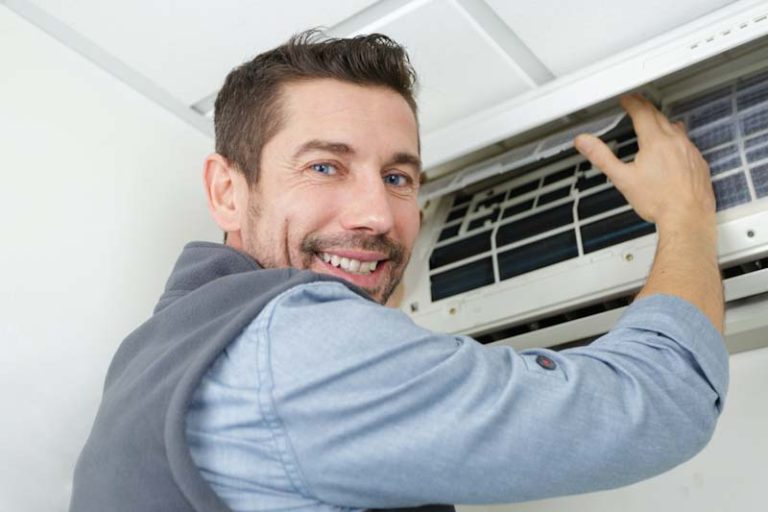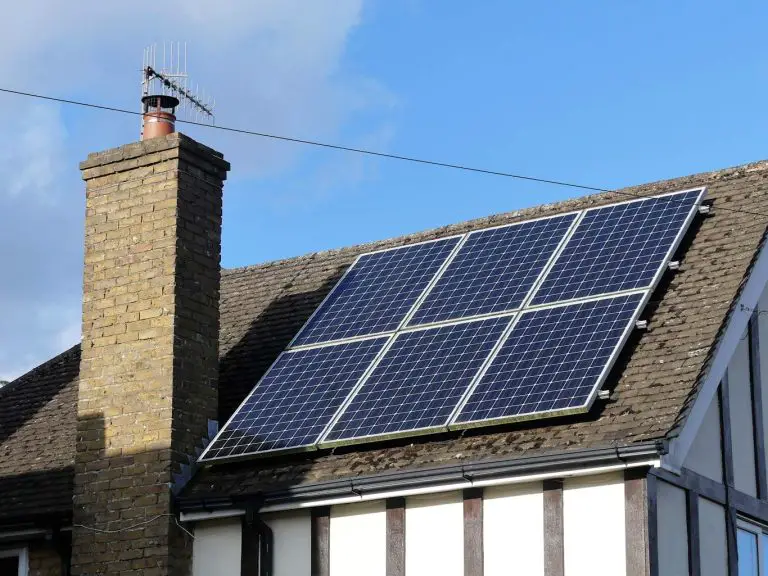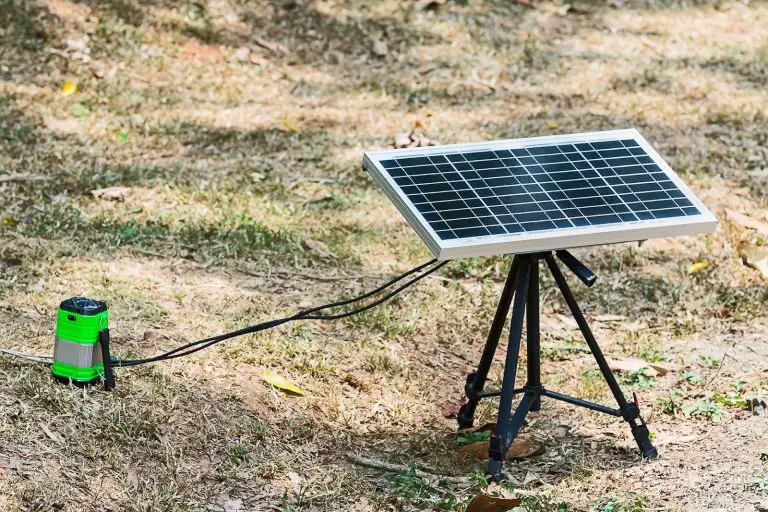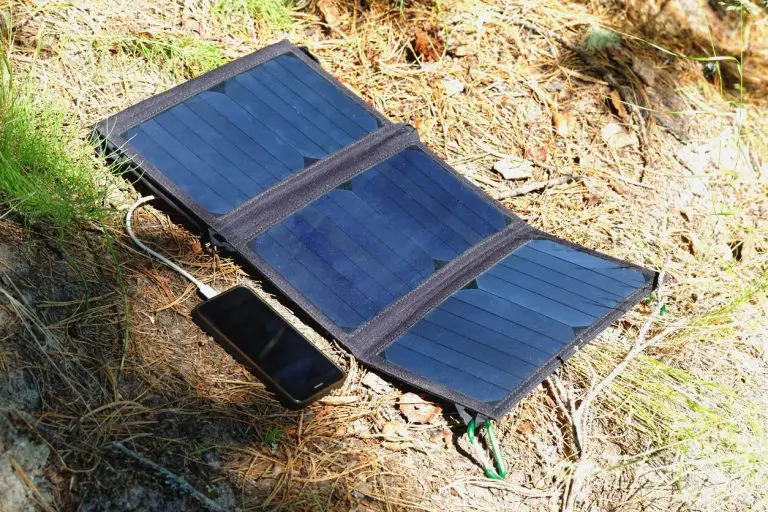Solar Heaters And Winter (All You Need To Know)
Are you wondering if it is possible to use solar heaters even during winter? Solar heating can be a perfect way to economize on utility bills and still be covered with the necessary hot water and a warm house through colder times.
Solar heating utilizes solar energy to produce heating factors to warm water and space. It has two classifications, namely, passive and active solar heating.
The main concern of most people is about the efficiency of solar heating in winter because of the dependence on weather conditions. Fortunately, solar heaters can still function in winter, although with some limitations.
This article answers all questions about solar heaters, their advantages, and their disadvantages.
What Is Solar Heating?
Solar heating uses solar energy to heat water or air to warm a space. Solar heating can be in two ways: (source)
- Passive solar heating
- Active solar heating
Passive Solar Heating
Passive solar heating doesn’t use a mechanical system, but it is obtained through a carefully studied house design and architecture to harvest solar heat and maximize it to keep the house warm. In this case, there is no other energy source for heat.
A house built to take advantage of passive solar heating is made with superior materials and special insulation so that it can retain the warm air inside.
Active Solar Heating
The most used type of solar heating (active solar heating) is obtained through a system designed to collect the heat from the sun and transfer it to the water, through several means, or into the house to make the air hot.
If the system is moving the heat through a liquid (which can be water or glycol), then there is a collector plate that collects the heat from the sun and traps it.
The heat collected from the sun through the collector plate is transferred to a fluid that carries it to a system that can distribute it to the house to make it warm. In addition, the warm water flowing through a system of pipes can heat the floors or the ceiling through radiation.
When the hot water generated is not used immediately, it moves to a storage tank, which can be used immediately or saved later. (source)
How Does Solar Heating Work?
Solar heating is helpful to heat the house or water through a system. The system opts to extract heat from the sun and transfer it to a liquid or air to make it hot.
Once a liquid or air is hot, it is either conserved for the times when necessary or used directly to provide heat in the house or hot water.
It is more common to find solar-heating systems using liquids, such as water or other non-toxic fluid. It absorbs the heat from the sun through a collector.
How Does The System Function?
The idea behind solar heaters is to have a very hot collector, and once the water comes in contact with it, through the actions of a pump, it will warm up.
Since the water flows quite fast through the collector, the temperature goes up by 5 to 10 °C. After that, the water moves to a storage tank or a heat exchanger for immediate usage.
In general, a solar heating system includes the following components:
- Pipes
- Pumps
- A collector
- Heat exchanger
- Storage tank
- System controls
How Is The Hot Water Stored In A Liquid-Eating System?
Solar heaters working with liquids require a storage system to keep the hot water when not used to heat the house or used directly. For this purpose, such as system has to have a pressurized tank.
Sometimes, the tank doesn’t need to be pressurized, but it depends on your system type. The size is chosen based on the household’s necessity and other characteristics such as durability, quality, and of course, the costs.
For example, tanks might have a maximum limit to the temperature they can hold and the pressure that they can withstand. In addition, you must build them with respect to the plumbing laws and regulations.
However, it is not necessary to have only one tank. It is possible to have two or more smaller-sized tanks.
How Is The Heat Distributed In The Solar Heating System?
Solar heaters distribute the heat through the following methods:
- Baseboards
- Radiant floors
- Radiators
Radiant floors use the heat produced by a solar-heated liquid radiated through a system of pipes situated on the floors. Although this type of heating system is slow to warm up a room, it is also very consistent and reliable.
Water baseboards and radiators require a higher temperature to warm up the space, which means larger radiators and baseboard surfaces.
Do Solar Air Heaters Work In Winter?
Solar air heaters work in winter too. Although the system depends on sunlight to work correctly, and the winter seasons might have days when the sun is blocked, solar panels can still harvest a certain amount of light to make the system work.
But, a solar heating system cannot always harvest enough sun to compensate for the heat required during winter. Solar heaters are less effective when outside is freezing and there is no sunlight.
In addition, it is possible to get warm air from a room and pass it through a thermal regulator, responsible for raising the air temperature and then sending it back into the house through a vent.
Tips To Boost The Effectiveness Of Solar Heater Systems
The lack of sunlight during the winter can become a problem if there are many days when the sun is blocked, but it is possible to maximize the effectiveness of the solar heater system using a few simple methods.
During cloudy days, solar heaters might not generate enough energy for your needs. For this reason, it is common to have a regular heating system that does not depend on solar energy as a backup for those days when sunlight is unavailable.
In this case, the solar heating system works when there is the sun; when not, the backup system can begin to work.
How To Make A Solar Heater System More Effective During Winter?
Since winter provides less sun, it is necessary to make some adjustments to make the most out of a solar heating system. Here are some effective methods to increase the system efficiency:
- Freezing protection
- Change the angle of solar panels
- Clean the solar panels frequently
- Have energy back up
A way to make solar heaters more effective and work during winter is to have freeze protection. Freeze protection makes the snow melt from the solar water system, so it can keep functioning.
Another effective way to improve efficiency is installing solar panels to harvest the most sun. For this reason, it is necessary to change their angle during winter. Generally, it is better to place solar panels vertically during winter and tilted in summer.
How To Position Your Solar Panels?
In winter, the sun is very low, and an increased vertical position will ensure that solar panels maximize production. In addition, an expanded upright position will make it easy for the snow to fall from the panels very easily.
Routine cleaning can ensure that nothing is blocking the sun from reaching the solar system if snow doesn’t fall easily from the panel. Furthermore, a backup system could be necessary for regions where the sun is lacking for days in winter.
For example, the solar heater can provide most heat through winter, maybe up to 60-80% of coverage, and the backup system can do the remaining work. (source)
What Are The Advantages Of Solar Heating?
Using solar heaters has several advantages, which do not include only the lower utility bills. However, using electricity, propane, or fuel is more expensive and leaves a carbon footprint on the environment.
The main advantages are the following:
- Tax credit and deductions for using solar energy
- Eco-friendly
- Reduce heating costs
- Easy to maintain
Tax Credit Deductions
In some states, it is possible to get incentives to use solar energy in the household, which is good for reducing the recurring costs and the initial investment to get the system set up and installed.
Incentives and tax deductions are attractive because homeowners can get back some of their money and still take advantage of lower utility bills.
Eco-Friendly
Solar heaters are responsible for less pollution and gas emissions than traditional systems. As per estimations, solar systems reduce carbon dioxide emissions of the household down to half when compared to conventional systems.
Reduce Heating Costs
The reduced heating costs are the most obvious advantage, the sun is free, and it doesn’t cost anything to get the energy to heat the house. Furthermore, solar systems can last a very long time before needing replacements and do not require much maintenance.
In the case of passive solar heating, the homeowner can take advantage of a warm house for the duration of the house life.
What Are The Disadvantages Of Solar Heating?
Despite the convenience of solar heating, there are also disadvantages to keep in mind. Here are the most common weaknesses:
- Initial investment required
- Sun is not always available
- Space is necessary for the setup
Initial Investment
Solar heating requires a significant initial investment, not only to buy the system and all of its components but also for the installation work. Therefore, those who do not have money set aside might be unable to install a solar system. Fortunately, some providers have financing options available.
Sun Is Not Always Available
Solar energy is not always available. Homeowners have no control over the weather and cannot predict when the sun is covered or when there is bad weather. In general, those with a solar heater have a backup system, too, to remedy the situation.
Necessary Space
A house with enough space to place all the components, the tank, and the panels is required to have a solar system. In addition, if a family is not planning to live in the house for ten years or more, it might not be a wise and economical move to install a solar heating system.
The money-saving in utility bills depends on the geographical area. Some areas receive more sun through the years and with higher intensity, making the system more efficient and capable of harvesting more sun.
Those living near the equator can get the most advantage from a solar heating system.
What Is Passive Solar Heating?
Passive solar heating doesn’t require solar panels or any other system to heat the house. It is a zero-cost heating setup. The house is designed and built with materials that can retain the heat created by the sun during the day and release it through the night.
Passive solar heating doesn’t require installations, maintenance, and energy consumption, and it doesn’t require an initial investment in a heating system. However, the house needs to be designed and built in a particular way, and the materials required are more expensive.
In a passive solar heating system, much attention goes into positioning the house to get the most benefit from the sun, and the window design strategically lets the sun heat the home.
The house is also adequately insulated so that it can retain the heat longer, and the materials of the walls and floors are selected based on their ability to radiate the heat to other rooms.
How Does Passive Solar Heating Work?
The house should face the south to make the most advantage of passive solar heating. In addition, windows are strategically placed facing the south to allow the sun to warm up the house more effectively.
This strategic positioning is very common for those living in North America.
Houses built in other locations might need a different angle to take advantage of the sun. Homes that use a passive solar heating system have a dark paint coating on many surfaces, acting as a heat absorber.
The houses have surfaces with thermal masses (materials that can retain the heat). For example, concrete, bricks, tiles, and other surfaces have substances that can retain heat.
Can A Passive Solar Heater Make You Economize?
Passive solar heating is very cost-effective because there is no need to spend money on utilities when you build the house correctly. Moreover, you can take advantage of it for the duration of the house.
But, one must go for passive solar heating when constructing a new house because you have to ensure the proper building methods. For example, you might need to demolish an existing home. The windows might need to be repositioned, etc.
There is an initial investment when considering using passive solar heating. Still, it is the same with installing an active solar heating system, which requires solar panels, wiring, tanks, and more.
Over a period, the lower utility bills make up for the initial investment and allow a homeowner to economize on the monthly costs.
How Hot Can A Solar Air Heater Get?
Solar collectors and heaters can reach temperatures as high as 200 °C, while some parts of the system can reach up to 300 °C.
During summer, a solar heating system can get too hot. The direct sunlight and the demand for hot water can overheat the collector and create damage.
In addition, the higher heat in the tank can create high pressure and damage the system over time because the materials tend to expand and restrict constantly.
Some solar heaters use an anti-freeze liquid to make the system more effective through winter, but in summer, the extreme heat can cause the fluid to become very acidic. As a consequence, it becomes corrosive and slowly damages the system components.
It is necessary to use protection for the solar system and the collector to prevent the system from overheating. You can do it by covering the system with appropriate covers and various mechanical systems.
Some covers absorb the heat and protect the system from too much heat.
Does The Solar Water Heater Work In The Rainy Season?
Generally, a solar heater can still deliver heat on rainy days. Although clouds reduce the sunlight, the sun still manages to get through on many occasions, allowing the solar heater to provide warmth.
But, if the weather is bad for many days in a row and the sunlight is consistently blocked, it can drastically reduce the efficiency of the solar heater. It is one of the reasons that many solar heaters have backup systems, so homeowners can still generate heat. (source)
Frequently Asked Questions
What Is Active Solar Heating?
An active solar heating system is composed of several components that can transform the heat coming from the sun into energy that can heat the house and water for domestic use. It differs from a passive heating system because it consists of mechanical components that produce active heating.
Does The Solar Heater Work At Night?
Solar heaters do not produce energy at night and thus require a backup system to make sure the house is warm throughout the night. But, with the presence of tanks, the water is heated through the day and remains hot at night. So, a backup system uses gas or another energy source that kicks into action during the night for house heating.
How Do I Keep My Solar Water Heater From Freezing?
Generally, the fluid inside the collector will freeze when the temperature gets too low. The best remedy to prevent freezing is to use an anti-freeze fluid. The fluid can circulate in a loop and make sure that nothing freezes.







